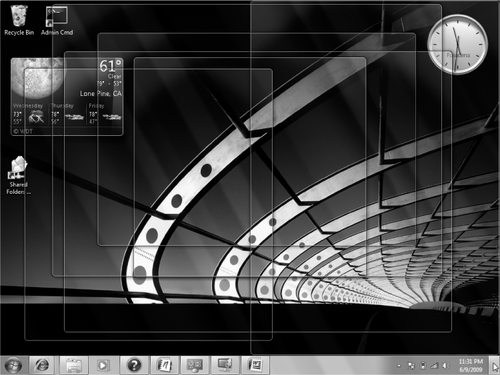Sometimes you need to get to the bottom of things,
whether it's to use a desktop icon, view a desktop gadget, or simply
enjoy your gorgeous desktop background. Windows 7 has some ways to
simplify these tasks.
If you're using Aero, you can view the desktop with an overlay of outlines representing all open windows, as shown in Figure 1; simply point to the Show
Desktop tool, the empty space at the right end of the taskbar. (If your
taskbar is on the left or right side of the screen, Show Desktop is at
the bottom.) When you move the mouse pointer away, the previous window
arrangement returns. You can get the same effect by pressing Windows
logo key+Spacebar.

For a more lasting
effect, click Show Desktop, and all windows are hidden. (This works with
or without Aero enabled.) To restore the previous arrangement, click
Show Desktop again. If you prefer to use the keyboard, Windows logo
key+D toggles between these two views.
You can bring your gadgets
to the fore without minimizing or hiding your open windows; simply
press Windows logo key+G.
1. Switching Between Windows
The time-honored task-switching keyboard shortcuts continue to work in
Windows 7. Alt+Tab cycles among the open windows (and, with Aero
enabled, invokes Aero Peek); Shift+Alt+Tab reverses the order. Windows
logo key+Tab cycles through the open windows using the visually flashy Flip 3D feature introduced in Windows Vista.